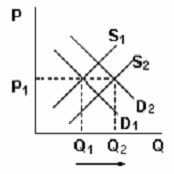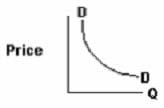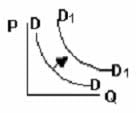Exam Details
Exam Code
:BUSINESS-ENVIRONMENT-AND-CONCEPTSExam Name
:Certified Public Accountant (Business Environment amd Concepts)Certification
:Test Prep CertificationsVendor
:Test PrepTotal Questions
:530 Q&AsLast Updated
:Apr 11, 2025
Test Prep Test Prep Certifications BUSINESS-ENVIRONMENT-AND-CONCEPTS Questions & Answers
-
Question 251:
All of the following are complementary goods, except:
A. Margarine and butter.
B. Gas and motor oil.
C. Cameras and rolls of film.
D. VCRs and video cassettes.
-
Question 252:
Utility companies can generally price their product, a good that establishes a comfortable life-style (i.e., electricity, gas for home heating) based on the fact that the demand:
A. Is relatively elastic.
B. Is perfectly elastic.
C. Is relatively inelastic.
D. Is perfectly inelastic.
-
Question 253:
Product demands become more elastic the:
A. Greater the number of substitute products available.
B. Greater the consumer income.
C. Greater the elasticity of supply.
D. Shorter the time period considered.
-
Question 254:
If a product's demand is elastic and there is a decrease in price, the effect will be:
A. A decrease in total revenue.
B. No change in total revenue.
C. A decrease in total revenue and the demand curve shifts to the left.
D. An increase in total revenue.
-
Question 255:
In any competitive market, an equal increase in both demand and supply can be expected to always:
A. Increase both price and market-clearing quantity.
B. Increase market-clearing quantity.
C. Increase price.
D. Decrease price.
-
Question 256:
When the federal government imposes health and safety regulations on certain products, one of the most likely results is:
A. Greater consumption of the product.
B. Lower prices for the product.
C. Higher prices for the product.
D. Increased supply of the product.
-
Question 257:
Tennis rackets and tennis balls are:
A. Substitute goods.
B. Independent goods.
C. Inferior goods.
D. Complementary goods.
-
Question 258:
Which one of the following would cause the demand curve for a commodity to shift to the left?
A. A rise in the price of a substitute product.
B. A rise in average household income.
C. A rise in the price of a complementary commodity.
D. A rise in the population.
-
Question 259:
The movement along the demand curve from one price-quantity combination to another is called a(n): A. Change in demand.
B. Shift in the demand curve.
C. Change in the quantity demanded.
D. Increase in demand.
-
Question 260:
An increase in the minimum wage will benefit specific economic wage groups as outlined below:
I. Employees at the minimum wage rate who remain employed will benefit, since they will receive more money.
II.
Many of the unskilled could lose their jobs. There would be fewer jobs for the currently unemployed such as less educated and untrained personnel (e.g., teenagers) who will have more difficulty finding work as firms reduce their labor force and pursue more efficiency.
A.
Only I.
B.
Only II.
C.
Both I and II.
D.
Neither I nor II.
Related Exams:
AACD
American Academy of Cosmetic DentistryACLS
Advanced Cardiac Life SupportASSET
ASSET Short Placement Tests Developed by ACTASSET-TEST
ASSET Short Placement Tests Developed by ACTBUSINESS-ENVIRONMENT-AND-CONCEPTS
Certified Public Accountant (Business Environment amd Concepts)CBEST-SECTION-1
California Basic Educational Skills Test - MathCBEST-SECTION-2
California Basic Educational Skills Test - ReadingCCE-CCC
Certified Cost Consultant / Cost Engineer (AACE International)CGFM
Certified Government Financial ManagerCGFNS
Commission on Graduates of Foreign Nursing Schools
Tips on How to Prepare for the Exams
Nowadays, the certification exams become more and more important and required by more and more enterprises when applying for a job. But how to prepare for the exam effectively? How to prepare for the exam in a short time with less efforts? How to get a ideal result and how to find the most reliable resources? Here on Vcedump.com, you will find all the answers. Vcedump.com provide not only Test Prep exam questions, answers and explanations but also complete assistance on your exam preparation and certification application. If you are confused on your BUSINESS-ENVIRONMENT-AND-CONCEPTS exam preparations and Test Prep certification application, do not hesitate to visit our Vcedump.com to find your solutions here.


